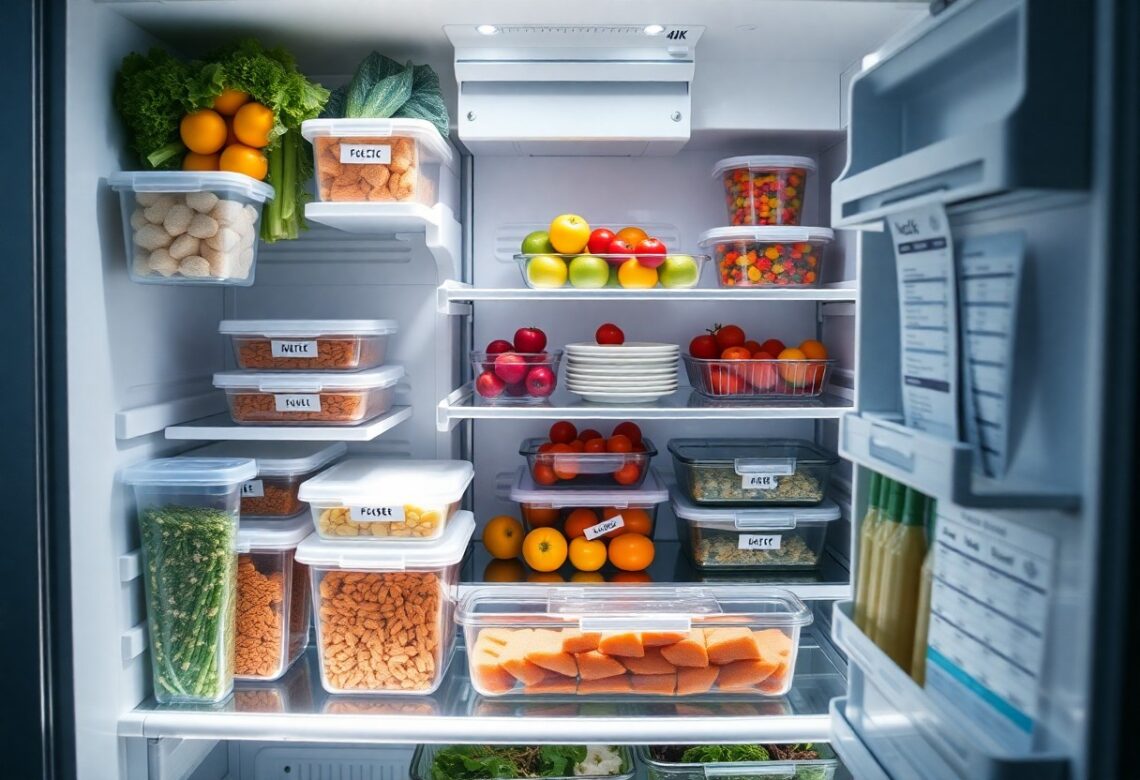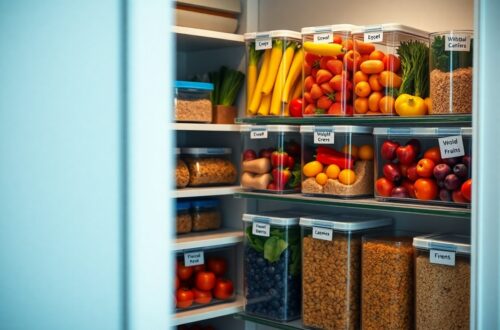You can significantly enhance your diet by simply organizing your fridge. A well-arranged refrigerator not only makes it easier to find healthy foods but also encourages you to make better choices. By designating specific zones for fresh fruits, vegetables, and lean proteins, you can streamline your meal prep and snack habits. In this post, you’ll learn effective strategies for maximizing space, reducing food waste, and ultimately supporting your dietary goals. Let’s examine how a few simple changes can lead to impactful results in your health journey.
Key Takeaways:
- Organization: Keep your fridge organized by grouping similar items together, such as fruits, vegetables, and proteins, to make healthier choices easier.
- Visibility: Place healthy foods at eye level and in the front to encourage snacking and meal prep with nutritious options.
- Portion Control: Store food in appropriate portions to help manage serving sizes and reduce the likelihood of overeating.
- Labeling: Use labels on containers to keep track of expiration dates and ensure you consume items before they go bad.
- Healthy Swaps: Replace less healthy condiments and snacks with more nutritious alternatives, making it easier to stick to your diet.
- Accessibility: Keep healthy snacks easily accessible, which can prevent unhealthy snacking and promote better choices.
- Meal Prep: Cook and store meals in advance to facilitate quick, healthy eating during busy times.
Understanding Your Diet Goals
For successful weight management, it’s imperative to clarify your diet goals. Knowing what you aim to achieve—be it weight loss, muscle gain, or simply healthier eating—will guide your food choices and help you make informed decisions while organizing your fridge. Understanding your motivations ensures that your dietary habits align with your overall lifestyle, making it easier to stay committed.
Identifying Nutritional Needs
An effective diet starts with recognizing your unique nutritional requirements. Each person has different needs based on factors like age, gender, activity level, and health status. By analyzing these variables, you can tailor your meals to provide the right balance of macronutrients and micronutrients, ensuring that your body gets what it requires to thrive and support your diet goals.
Setting Realistic Targets
Around your diet goals, it’s important to set realistic targets that are both achievable and sustainable. Establishing clear, measurable objectives will help you stay motivated while allowing you to track your progress. Aim for gradual changes rather than drastic overhauls, as this makes the journey more manageable and less overwhelming, ultimately contributing to long-lasting success.
To create realistic targets, consider breaking down your larger goals into smaller, actionable steps. For instance, instead of striving to lose 20 pounds in a month, aim for a sustainable loss of 1-2 pounds per week. Celebrate your milestones along the way, as these small achievements can keep you motivated and reinforce your commitment to long-term dietary success.
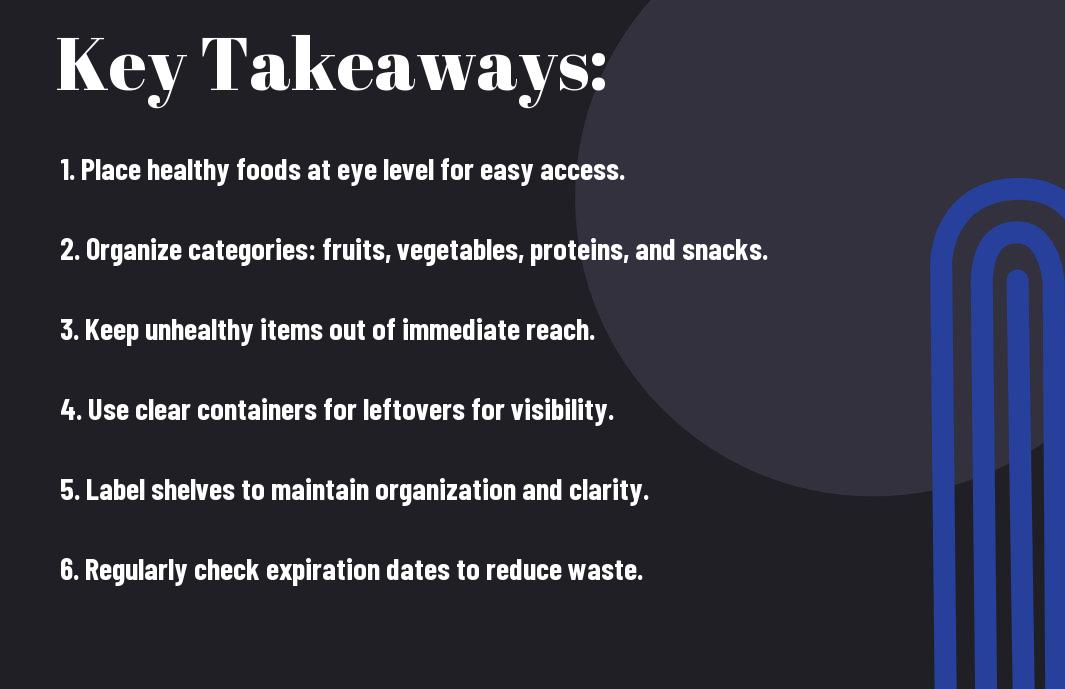
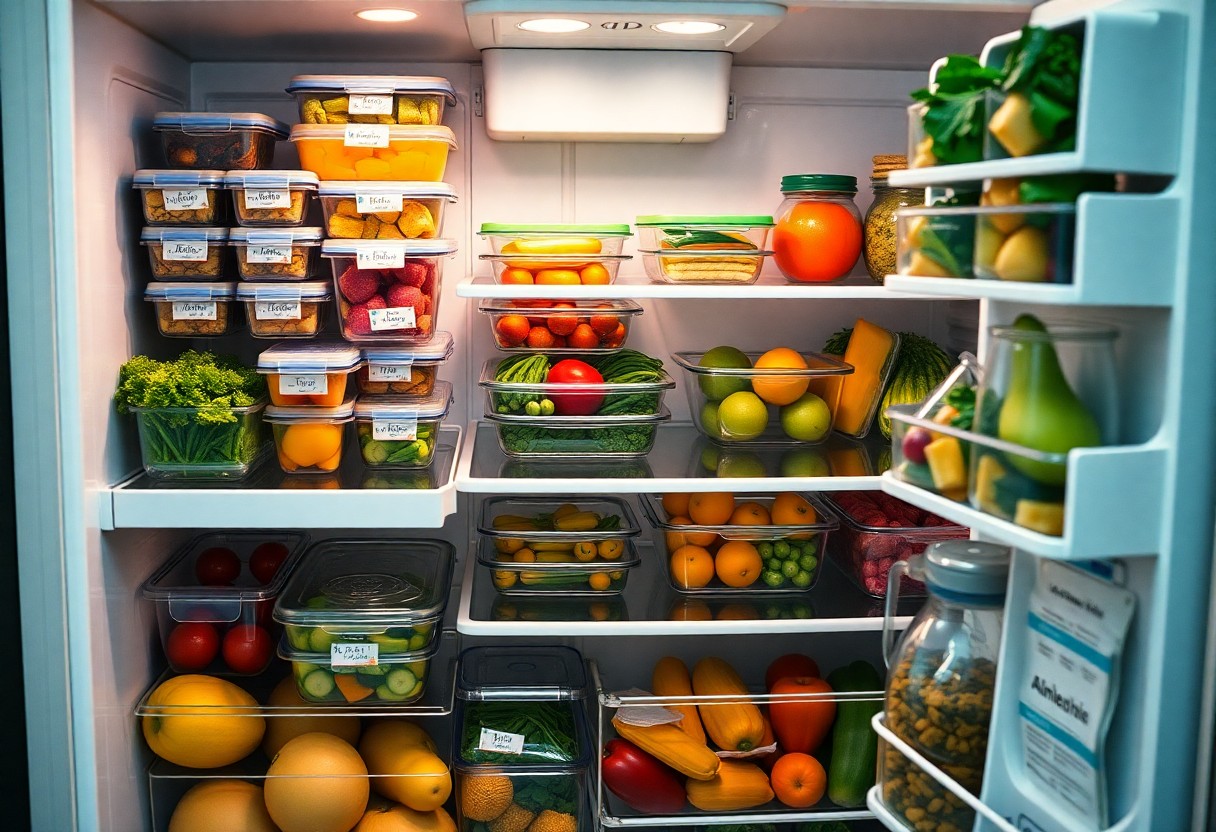
Importance of Fridge Organization
Some people underestimate the impact that fridge organization can have on their diet success. By keeping your fridge neat and well-arranged, you can make healthier food choices more accessible and inviting. Interested in learning more? Check out How does organizing a fridge help with weight loss?
Enhancing Visibility of Healthy Options
By organizing your fridge to place healthy options at eye level, you make it easier for yourself to choose nutritious foods. This simple tactic helps you stay committed to your dietary goals and encourages you to reach for fruits, vegetables, and lean proteins over less healthy snacks tucked away at the back.
Reducing Food Waste
Reducing food waste starts with knowing what you have on hand. When your fridge is organized, you can easily see and access all your ingredients, which helps you use them before they spoil. This not only saves you money but also aligns with a more sustainable lifestyle.
With a clear view of your food inventory, you can plan meals effectively, ensuring that you utilize everything you purchase. Storing items properly and using clear containers can also minimize confusion about expiration dates, helping you avoid unnecessary waste and contributing to a healthier diet overall.
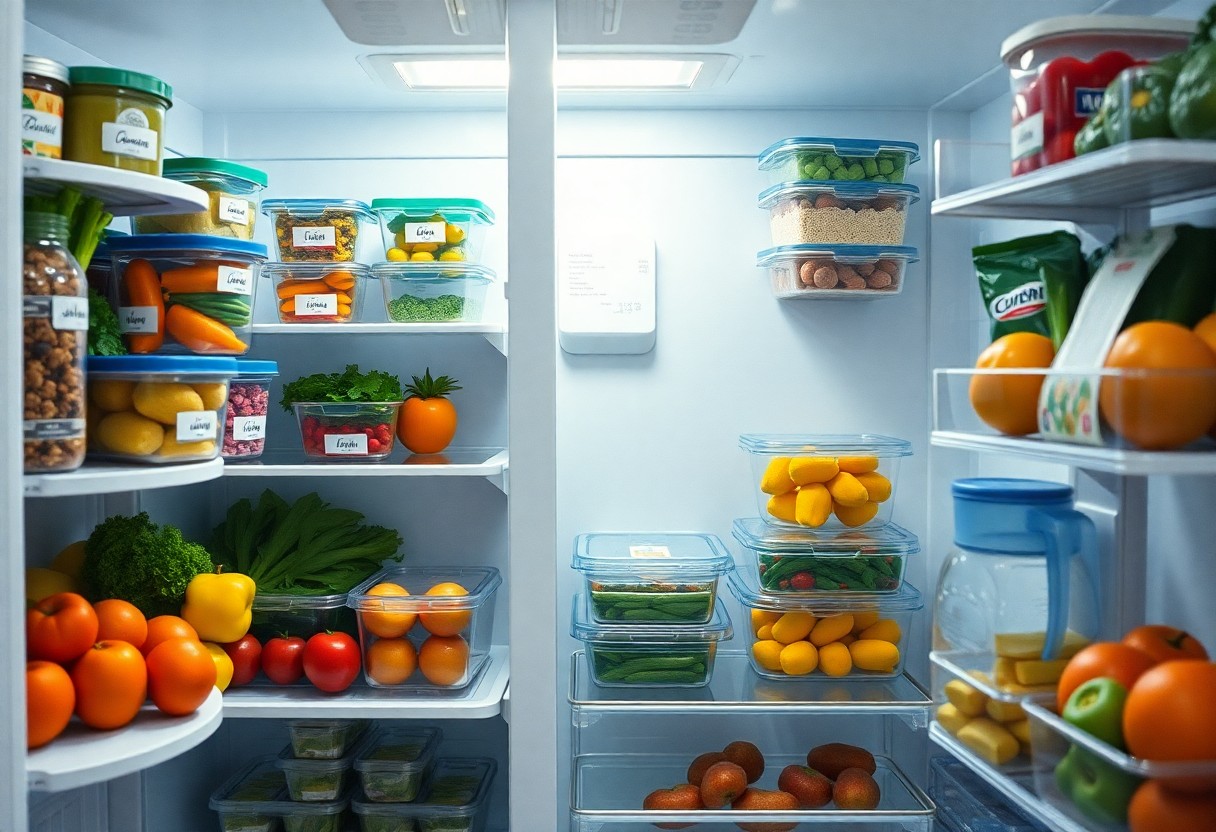
Categorizing Foods for Success
Unlike a disorganized fridge, categorizing your foods can streamline your meal prep and keep you on track with your diet goals. By grouping similar items together, you create a visual guide that makes it easy to assess what you have on hand and encourages healthier choices. Create distinct sections for proteins, grains, dairy, and snacks to efficiently navigate your options and eliminate the temptation of unhealthy foods lingering in the back of your refrigerator.
Grouping by Food Type
Beside grouping by meal type, consider organizing your fridge by food type, which can simplify your shopping and meal planning. Allocate specific shelves or containers for proteins, vegetables, dairy, and grains. This not only aids in meal assembly but also reduces food waste by ensuring that items are always in sight, promoting a balanced diet.
Prioritizing Fresh Produce
Above all, prioritize fresh produce within your fridge. Placing fruits and vegetables at eye level ensures that they are more accessible when you’re looking for a quick snack or ingredient. This visibility promotes healthier snacking habits and adds imperative nutrients to your meals.
Categorizing fresh produce in your fridge is an effective way to encourage better eating habits. When you clearly segment fruits and vegetables, you’re more likely to include them in your daily meals. Organizing them according to ripeness or meal use can help you consume them more efficiently before they spoil. Additionally, having vibrant, fresh options front and center can inspire you to experiment with new recipes, leading to a more varied and nutritious diet.
Storage Techniques for Freshness
Now that you’ve reorganized your fridge, implementing effective storage techniques will help maintain freshness and enhance your diet success. Ensuring that your food stays fresh not only reduces waste but also encourages you to stick to healthy choices. By utilizing proper temperature settings and effective packaging, you can enjoy delicious meals that support your nutritional goals.
Optimal Temperature Settings
Temperature plays an important role in food preservation. To optimize your fridge for freshness, here’s a simple breakdown:
| Fridge Temperature | 32°F – 40°F |
| Freezer Temperature | 0°F or below |
Proper Packaging and Labeling
On top of temperature, the way you package and label your food significantly impacts its longevity. Using airtight containers can prevent moisture and air from degrading your fresh produce.
In fact, proper packaging not only keeps your food fresh but also helps you stay organized. Labeling containers with dates ensures you know when to consume items, reducing the chances of spoilage. Clear, opaque, or color-coded containers can enhance visibility, making it easier for you to grab healthy snacks. By investing a little time in packaging and labeling, you’ll stay on track with your dietary goals and enjoy fresh, appetizing meals daily.
Strategizing Meal Prep and Planning
Once again, meal prep and planning can significantly enhance your journey towards diet success. Establishing a weekly menu helps you control portions and ingredients while ensuring that your meals remain enjoyable and aligned with your goals. By dedicating a couple of hours each week to plan your meals and shop accordingly, you set yourself up for nutritious choices and eliminate the stress of last-minute decisions that can lead you astray.
Batch Cooking for Convenience
For those busy weeks, batch cooking is an effective technique that saves time and aligns with your dietary objectives. Preparing large portions of healthy meals allows you to enjoy delicious food throughout the week without the hassle of daily cooking. By dividing these meals into individual servings, you’ll always have a quick, nutritious option ready, making it easier to stick to your plan.
Utilizing Leftovers Effectively
Any leftovers in your fridge can be a fantastic asset when it comes to sustaining your healthy eating habits. Transform your remnants into creative meals to ensure nothing goes to waste while keeping your diet varied and exciting.
The key to utilizing leftovers effectively lies in your approach. Start by creating meals that can be easily repurposed, like grilled chicken, roasted vegetables, or hearty grains. You can mix and match these components to create new dishes—think grain bowls, salads, or stir-frys. This not only minimizes food waste but also helps you maintain your dietary goals without the constant pressure to cook fresh meals. Get creative with your spices and sauces to keep things flavorful and interesting!
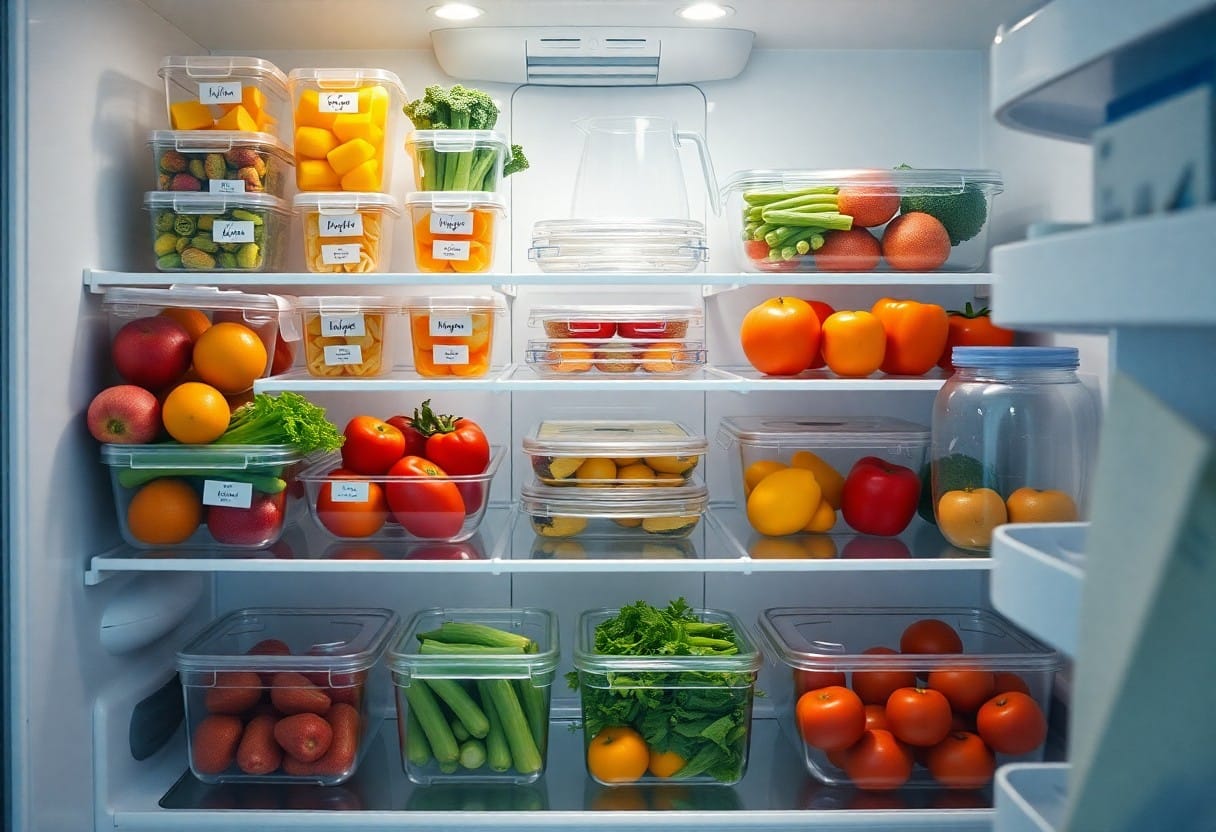
Monitoring Progress and Adjustments
Despite your best efforts in arranging your fridge, progress may vary as you commence on your diet journey. Regularly evaluating your eating habits alongside your fridge organization is important for staying on track. Use resources like Fridge Organization Tips for Eating Healthier to refresh your approach and make necessary adjustments to enhance your results.
Keeping a Food Journal
The practice of maintaining a food journal can provide valuable insights into your dietary patterns and behaviors. By logging what you eat and when, you can identify triggers and patterns that may lead to unhealthy choices, enabling you to make more informed decisions moving forward.
Regularly Assessing Your Setup
About once a month, take some time to evaluate your fridge setup and the foods you consistently reach for. This assessment will help you understand what’s working well and what needs to change. Are there healthy items that you often overlook? Are you stocking foods that align with your diet goals? Making these observations is key to creating an environment that supports your diet success.
Indeed, your fridge should be a dynamic space that evolves with your dietary journey. By revisiting your organization periodically, you ensure that your nutritional needs are met and that temptations are minimized. If you notice that certain items frequently go unused, consider replacing them with healthier alternatives that you enjoy. This proactive approach not only enhances your eating habits but can also make meal prep smoother and more enjoyable.
Summing up
Drawing together effective fridge organization can significantly impact your diet success. By placing healthy options at eye level and ensuring easy access to nutritious snacks, you create an environment that supports your goals. Prioritize fresh fruits and vegetables, and designate areas for meal-prepped items, making healthier choices convenient. Regularly declutter and restock your fridge to keep temptations at bay. With these strategies in place, you empower yourself to make better food decisions and stay on track with your diet.
FAQ
Q: Why is it important to arrange my fridge for diet success?
A: Arranging your fridge effectively can help you maintain a healthy diet by making nutritious options more accessible while discouraging unhealthy eating. When you organize your fridge, you are more likely to grab healthier items first, which aids in portion control and encourages better food choices.
Q: What is the best way to organize my fridge for meal prepping?
A: To organize your fridge for meal prepping, start by designating specific shelves for different food groups. Use clear containers to store pre-portioned meals, label everything with dates, and keep frequently used items at eye level. This way, everything is easily visible and reachable when you’re ready to eat, streamlining your cooking process.
Q: How can I store fruits and vegetables to maximize freshness?
A: Store fruits and vegetables in separate drawers to ensure they stay fresh longer. Keep leafy greens in breathable bags or containers and store ethylene-producing fruits, like apples and bananas, away from veggies to prevent premature spoilage. Regularly check and remove any spoiled items to maintain a clean and healthy environment.
Q: What types of snacks should I keep in my fridge for diet success?
A: Choose healthy snacks such as yogurt, cut-up vegetables with hummus, or fruit plates. Keeping these options readily available in your fridge ensures that when you’re hungry, you’ll choose nutritious snacks instead of junk food. Pack snacks in easy-to-grab containers for added convenience.
Q: How can labeling my fridge contribute to my diet goals?
A: Labeling shelves and containers in your fridge can help you track what you have and remind you of portion sizes. When you clearly identify items like “meal prep” or “healthy snacks,” it allows for more efficient meal planning and encourages you to stick to your diet by making healthy options visible and appealing.
Q: Should I keep drinks in the fridge, and if so, which ones?
A: Yes, keeping drinks in the fridge can encourage healthier hydration choices. Opt for water, herbal teas, and homemade infused water. Try to limit sugary drinks and sodas. By making these healthier drinks accessible, you are more likely to choose them over less nutritious alternatives.
Q: How often should I reorganize my fridge to stay on track with my diet?
A: It’s beneficial to reorganize your fridge regularly—at least every couple of weeks or whenever you shop for groceries. This ensures that you remove expired items, re-evaluate your food storage needs, and refresh your meal prep containers. Doing so can keep your diet on track and help you avoid food waste.
